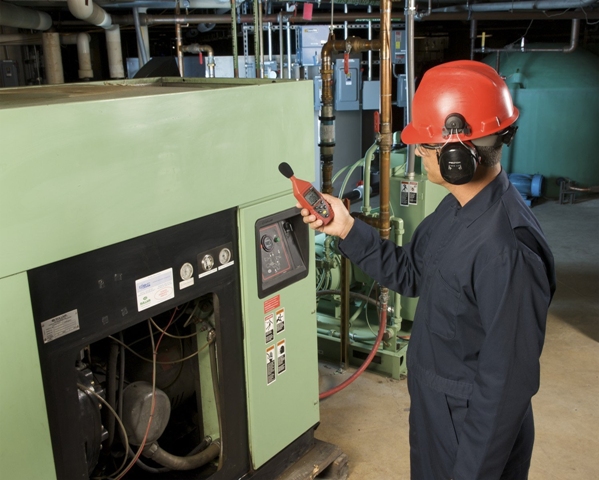There is no need to risk fines for breaching noise at work regulations when the cost of compliance is so low. Earlier this month, a Keighley furnishings company was fined after failing to protect its workforce from excessive noise levels on production machinery.
Bradford Crown Court was told that an investigation by HSE found the company had not made a suitable assessment of the noise levels in the factory between 2006 and 2013. The employer should have known its workforce was being subjected to loud noise and made personal hearing protection compulsory when the production changes were made. However, hearing protection was not introduced until 2013.
In addition a health surveillance programme for noise exposure should have been operating for affected workers, but this was not brought in until 2013, when 40 employees had to be given a hearing test. The company was fined £15,000 and ordered to pay £4,457 in costs after admitting breaching Section 2(1) of the Health and Safety at Work Act 1974.
The Control of Noise at Work Regulations 2005 came into force for Great Britain on 6 April 2006. The level at which employers must provide hearing protection and hearing protection zones is now 85 decibels (85dB) daily or weekly average exposure, and the level at which employers must assess the risk to workers' health and provide them with information and training is now 80dB.
Logarithmic measure in decibels
Sound level meters measure sound pressure levels in industrial, environmental and aircraft applications as a logarithmic measure in decibels above a standard reference level. Their main components are a microphone, a signal processor and a display device.
According to IEC 61672-1 Electroacoustics Specifications, there are three types or classes of sound level meters: conventional meters that measure exponential time-weighted sound, integrating or averaging meters that measures time-average sound levels, and integrating meters that measures sound exposure level. Sound level meter prices start from under £40 for a basic Type 2 meter to over £4,500 for a sophisticated Type 1 meter.
The Amprobe SM-10 Type 2 sound meter measures sound from 30-130dB at a frequency range from 31.5Hz to 8KHz. It provides fast and slow response settings for checking peak and average noise levels. It allows health and safety engineers to perform acoustic analysis to assure compliance with safety codes and regulations.
The user can select the desired response time and weighting. If the sound source consists of short bursts or if only capturing peak sound, the response is set to fast. To measure average sound level, the slow setting is used and an ‘A’ weighting is selected for general noise sound level while a ‘C’ weighting is selected for measuring the sound level of acoustic material.
The Extech 407732 Type 2 meter has two separate measurement ranges for lower and higher sound volume applications. In the low range it can measure 35-100dB but in a noisier environment, the higher measurement range is 65-135dB, making it equally suitable for use in quiet offices or noisy factories.
As well as selecting ‘A’ or ‘C’ frequency weighting and fast or slow response, pressing the ‘max hold’ mode button only updates the meter display when a higher reading is detected than the one already on the display. A ‘data hold’ function works in similar fashion.
An external calibrator that can provide a 94dB signal at 1 kHz is required to calibrate the Extech 407732, but calibrate.co.uk can provide a full sound meter calibration service for meters from several different manufacturers.
Protective wind vane
The Testo 815 sound level meter measures sound level with an accuracy of plus/minus 1dB and resolution of 0.1dB, and features a protective wind vane for use outdoors. It uses frequency weighting to characteristic A and C, maximum and minimum value memory and built-in tripod knuckle screw. The fast/slow button may be used to change response time from 1s to 125ms.
The Chauvin Arnoux CA834 Type 2 recording sound level meter offers four measurement ranges up to 130dB, data capture software and internal memory capacity for 32,000 readings. Measurement ranges include 30-80dB, 50-100dB, 80-130dB and 30dB-130dB auto ranging. Captured data can be transferred to a PC by using an RS-232 cable.
As stated previously, a sound calibrator usually provides a reference sound pressure level of 94 dB and/or 114 dB at a frequency of 1 kHz. The sound calibrator must have a traceable and documented calibration certificate from a higher level laboratory, usually from a national metrology institute.
Regular calibration of sound level measurement equipment ensures that all testing results are accurate, and professional calibration laboratory technicians are able to match a sound meter against a known standard in order to ensure that the device is working within acceptable sound level parameters.
For further information visit PASS Ltd’s specialist sound meters web page.



